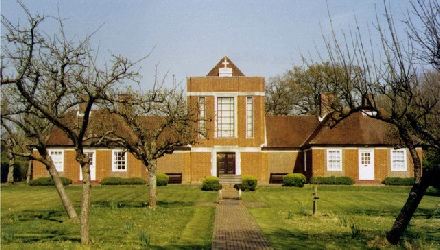



The Parish Church of St George the Martyr, Waterlooville

Appropriately on Veteran’s Day, Barbara and I had occasion to go to Burghclere in Hampshire, close by the Berkshire border. We seized the opportunity there to visit The Oratory of All Souls. This is at Sandham Memorial Chapel, now a National Trust property. The interior houses a remarkable set of mural canvases of rather mundane war experiences by Private Stanley Spencer, who saw active service in the First World War.
Stanley Spencer (later to be knighted as Sir Stanley), was born in Cookham, Berkshire, in the year 1891 and died in 1959. He became one of the most original and talented of the modern artists, ignoring most of the artistic trends of the time. He used his home village as the setting for expression of his deep religious feelings, especially using the recurring theme of the Resurrection in his paintings and drawings. He was a consummate draughtsman, sketching competently even at speed, and all his pictures evoke strong empathetic feelings in the viewer.
When entering the chapel we were overwhelmed by the sight of all the wartime depictions covering all the walls. Completed in 1932 and done as a catharsis for the savage experiences he had seen, principally in Salonika, they show wounded and shell-
In one scene, a soldier is down full-
“You work that you may keep pace with the earth and the soul of the earth, for to be idle is to become a stranger unto the seasons, and to step out of life’s procession that marches in majesty and proud submission towards the infinite.”
During close examination of the whole group of paintings I was struck by the affinity of style with one of my great favourite artists -
We left the location profoundly moved by what we had seen. National Trust member or not -
Rod Dawson
Easter Edition 2011
Sandham Memorial Chapel
